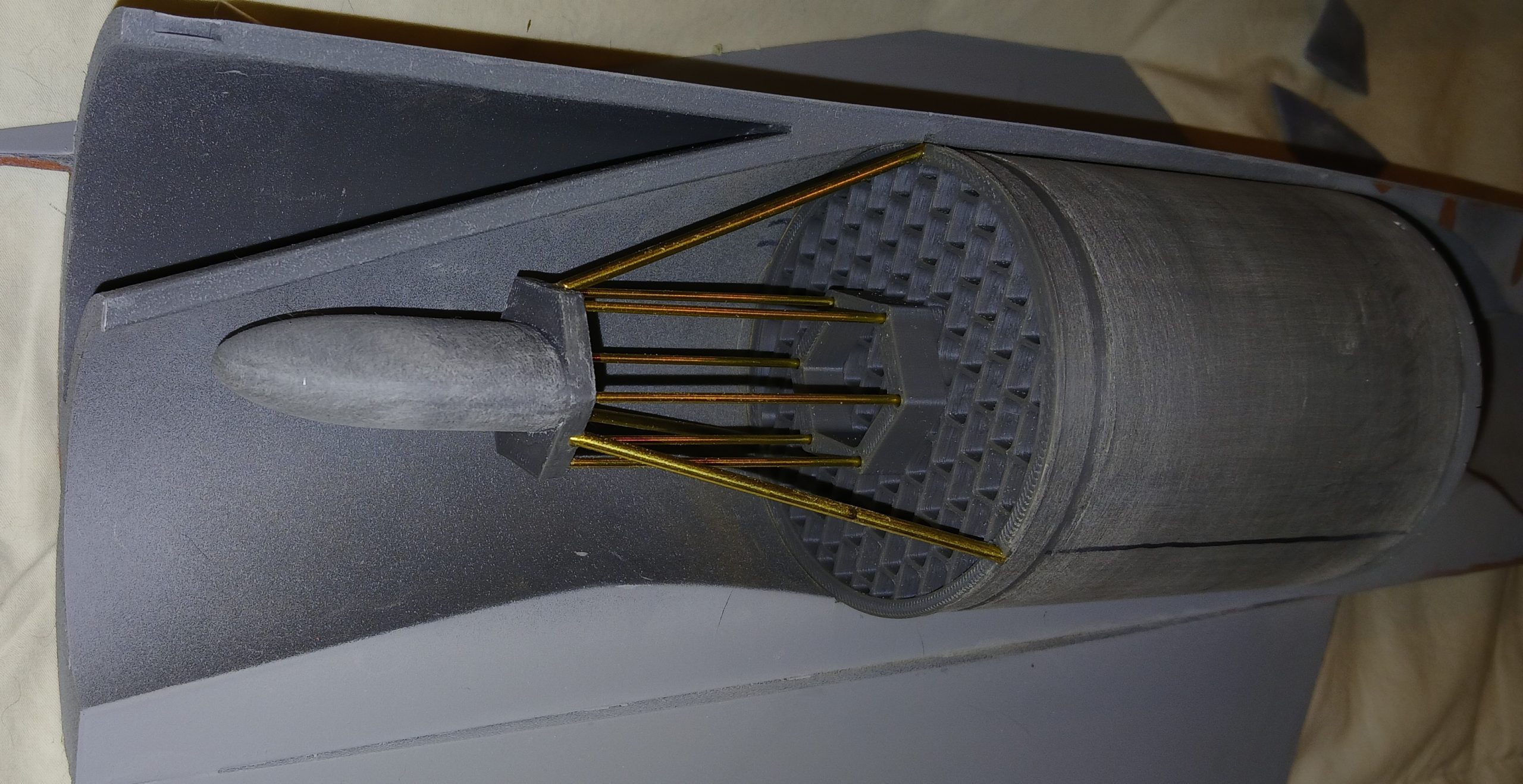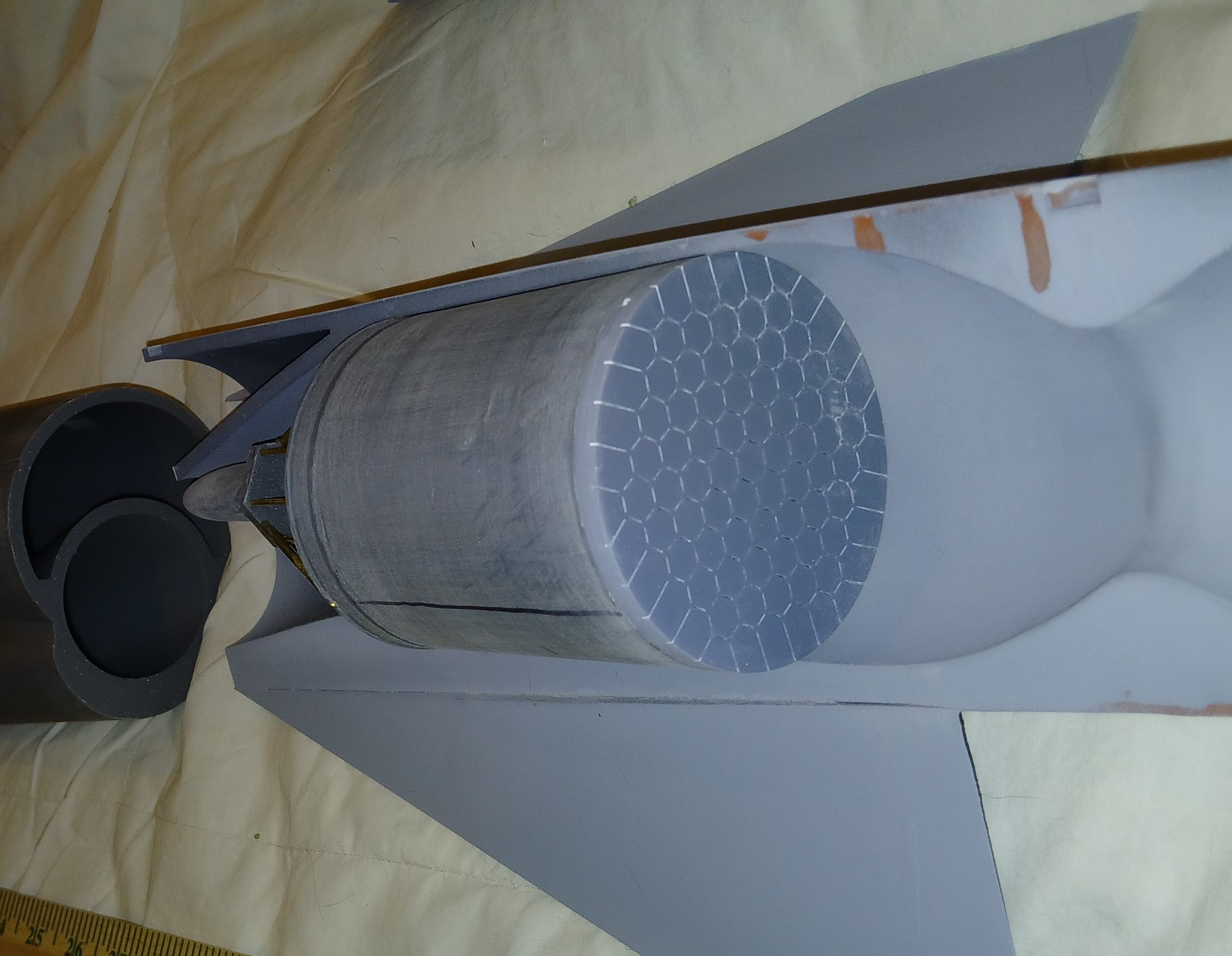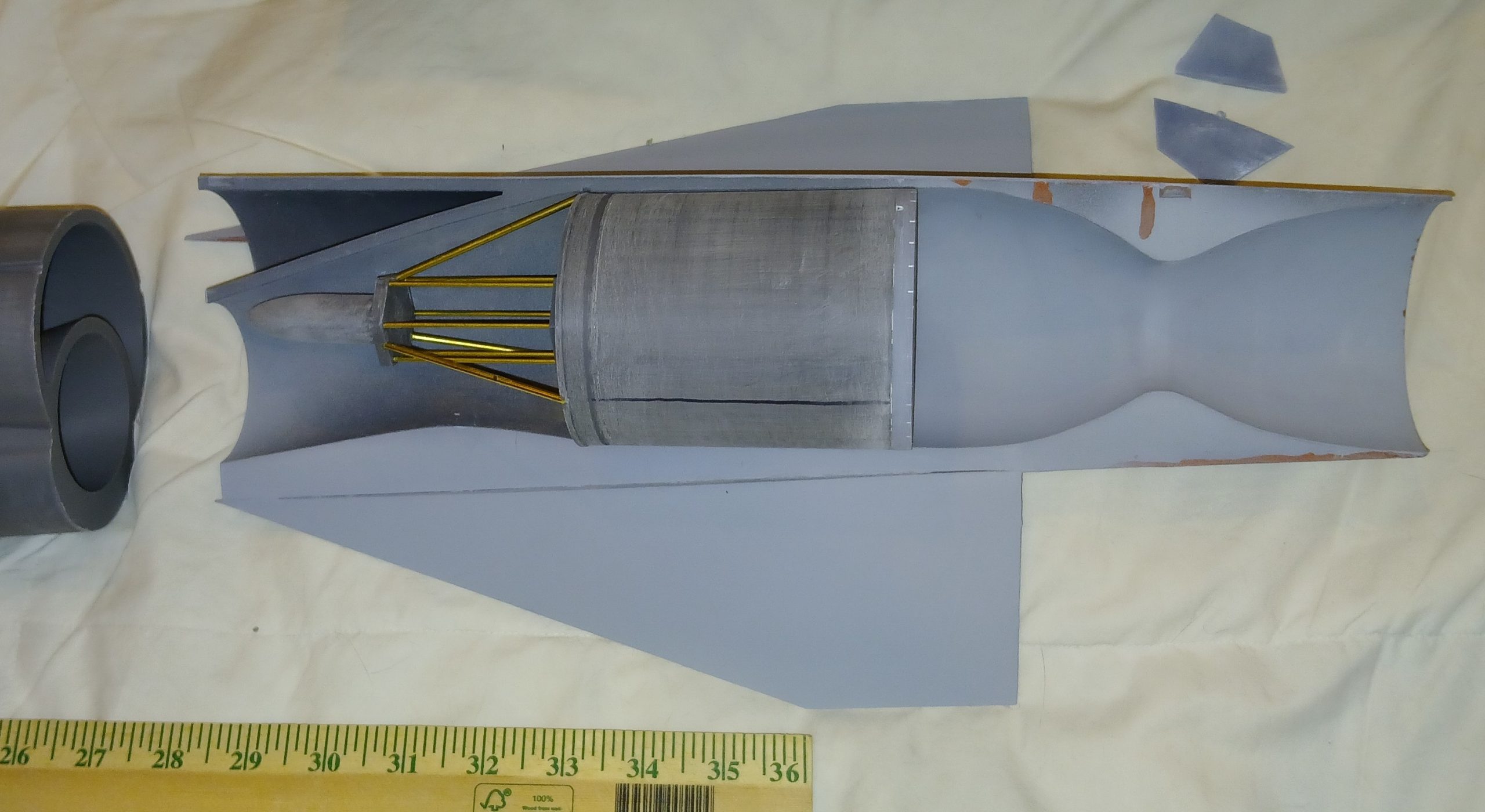Rumored and discussed for years, in 1962 General Atomic reportedly built a “Corvette sized” display model of the 4,000 ton Orion spacecraft as a spacegoing battleship. This model was shown to President Kennedy, and the reported reaction was… not great. The model was described by a few who had seen it, but all evidence of the model vanished, with the presumption that the model itself was either destroyed or lost, probably shut in a crate next to the Ark.
Well over a decade ago I took those scraps of description, coupled with random bits of data, discussions with a few who knew things, and some imagination, and pieced together my own interpretation of what the Orion Battleship may have looked like.
Some printouts of my diagrams, years ago:


Somewhat to my surprise, my diagrams have been spread far and wide and have become the de facto canonical image of the Orion Battleship, with sketches, 3D CAD models, paintings, etc. being made based to greater or lesser degrees on my design. My one real contribution, I guess. I’ve never tried to claim that it was accurate, just that it was the best that I could do with what I had. I never expected to be able to do better.
But then author Brent D. Ziarnick published the book “To Rule the Skies” in 2021. In it was, at last, a photo of the model. While the book was published 3 years ago, I only stumbled across this image today:

There are *clear* differences between the model and my interpretation. Mostly they involve the means of projecting the pulse units: I based my design on the system used for the 1963 4,000 ton Orion: a cannon along the ships centerline that shot the pulse units directly aft through a central hole in the pusher plate. But the model depicted an older, more cumbersome approach: those “fins” on the side are actually rails. They’d lob the pulse units past the edge of the plate. I now this because circa 2009-12 I communicated with Jim Bryant, who was an artist at General Atomic and he created a sketch for me of Orion as he knew it at about the time the model was made. From his sketch I created CAD diagrams:

You put my two diagrams together… and you get pretty close to the configuration shown in the model.
I’ve got high hopes for getting an improved-rez version of the photo (maybe more!). I will use that to create a new set of diagram, probably also a 3D model, of the *official* “Orion Battleship.”
I don’t feel too bad about getting some things dead wrong. The Orion concept was in serious flux at the time; had the USAF proceeded with the battleship, it would *not* have used the pulse unit “fins.” Instead it would have evolved to something like what I drew up. It could well have evolved *past* what I drew up, but that’s a question that can only be answered in an alternate reality.
If you want the full Orion Battleship Experience, check out Aerospace Projects Review issue V2N2:
https://www.aerospaceprojectsreview.com/ev2n2.htm
![]()



























